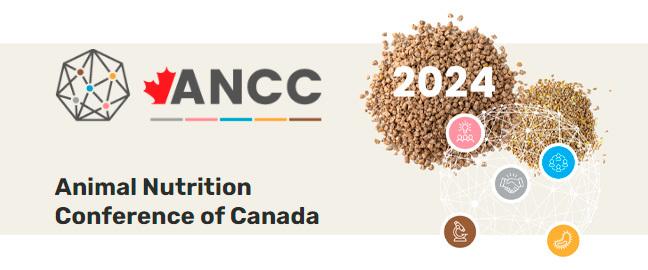Explore all the information on
Dairy cattle reproductive management
Welcome to the page about Dairy cattle reproductive management of Engormix; a source of knowledge on Dairy cattle reproductive management.
The quality of the transition period is decisive for the success of the subsequent lactation cycle. Cows with a poorer transition produce less milk, take longer to become pregnant, and are more likely to lose pregnancy and to be culled from the herd, causing substantial economic losses. Investments in infrastructure, personnel, and nutrition focused on prevention and treatment of postpartum health problems, when effective, often result in an excellent return of investment because it...
Comments : 0
Recommendations: 0
Global warming and the constant increase in cow yields aggravate the summer problem on dairy farms and increase the production losses caused to dairy producers. An important part of the losses caused is due to the negative effect of heat load on the fertility of cows that are inseminated in summer. To characterize this effect, we collected data from five large-scale, high-yield dairy farms (1,500 to 3,000 dairy cows per herd) located in the "Laguna" region of northern Mexico, characterized...
Comments : 2
Recommendations: 0
Recommended events
May 14, 2024
Canada - Manitoba - Winnipeg
Mohamed Donia (University of Illinois) Ruminant neonates rely on colostral immunoglobulin and nutrients to support health, welfare, and performance, by protecting against infectious disease and providing early life resilience. Recent evidence suggests that transferred colostral cells also contribute to neonatal immunity under controlled experimental conditions. This study provides evidence that colostral cells enhance neonatal resilience to routine,...
Comments : 0
Recommendations: 0
.jpg&w=3840&q=75)
Mohamed Donia (University of Illinois) talks about the benefits of colostral cells to neonatal lambs' health and welfare, during the 11th Symposium on Gut Health in Production of Food Animals in St. Louis, USA....
Comments : 0
Recommendations: 0
Post-calving care for cattle is a critical phase in dairy farming that significantly impacts the health and productivity of both cows and their offspring. Proper care during this period is essential to ensure a smooth transition from pregnancy to lactation and to prevent potential complications. In this article, we will delve into the key aspects of post-calving care for cattle and why it is of utmost importance. Understanding the Significance of Post-Calving Care Calving...
Comments : 0
Recommendations: 0
This passage provides an overview of the concept of Metabolic Inflammation (MI) in dairy cattle during the first several weeks of lactation. It explains that inflammation is an important physiological response, but when it persists for a long time, it can lead to negative effects on animal health and productivity. The passage also notes that there is still much to be learned about the causes and consequences of Metabolic Inflammation (Mi) in dairy cattle, and that further research is needed...
Comments : 2
Recommendations: 2
In mid-June this year, I realized a professional visit to Spain, where I lectured at a national conference organized by one of the country’s most popular dairy newspaper, Vaca Pinta, followed by a week of lecturing and consultancy for large scale dairy farms with MSD, realized in different regions of Spain. Among the visited regions were Talavera, south of Madrid, Galicia, in the northwest of the country, in the Atlantic coast and then the regions close to the cities of Girona and...
Comments : 2
Recommendations: 0
...
Comments : 2
Recommendations: 0
Approximately 40 percent of calves that require partial assistance at birth die immediately or later (those that survive are more likely to develop respiratory and digestive problems later in life). Dystocia is associated with 50% pre-weaned calf mortality, each dairy should implement a dystocia management program and use management practices that limit the occurrence and impact of dystocia. ...
Comments : 1
Recommendations: 2
Introduction The rise in milk production has been accompanied by increasing incidence of health problems, declining ability to reproduce and declining the fertility of modern dairy cows. The transition from late gestation to early lactation is viewed as one of the most challenging elements of the production cycle. Perhaps the most important physiological change occurring during this period is the decrease in dry matter intake around...
Comments : 6
Recommendations: 8
.jpg&w=3840&q=75)
Kevin Ziemba, Eastern USA Manager at STgenetics talks about the the current situation in the dairy industry, sustainability and efficiency, genetics and the importance of strategy and profitability....
Comments : 0
Recommendations: 1
The summer of 2020 will be remembered as one of the hottest summers in Israel in decades. The summer heated many agricultural sectors, including the dairy industry. Beyond high heat load conditions throughout the summer, two unusual heat waves stood out in particular. The first heat wave was in May and the second in early September, as can be seen in fig 1. Fig. 1 – average daily milk production (kg) per cow in Israel in 2020. (blue line 2019, red...
Comments : 1
Recommendations: 0
What is the best electronic cow monitoring system for heat detection on the market? I am getting killed with Silent Heats & need to choose the best system for us to buy.. One that is simple & effective & tells me when to inseminate. Do you prefer collars or legs strapped monitors? Why? Your thoughts please? Thank you!...
Comments : 0
Recommendations: 0
INTRODUCTION Asian buffalo or water buffalo is classified under the genus Bubalus, species bubalis. Buffalo contributes about 12.39% of the total milk produced from all dairy species at global level [1]. On average, 120.15 million tons of milk are produced by buffalo, out of which India and Pakistan contribute 71.7% and 22.71%, respectively [2]. Geographically, Nepal is divided into five plains: Terai plain, Siwalik Hills, Lesser Himalaya, Higher Himalaya and Tibetan...
Comments : 0
Recommendations: 0
1. Introduction Reducing the production costs is becoming more important in the dairy industry. The suitable development of replacement heifers is an expensive investment for dairy farms, so estimations of all associated costs are about 20% of the total production costs [1]. The age at first calving (AFC) reflects the rate of growth of the female. A late entry in the productive life reduces the economic value of the animals, due to the potentially decreased number of...
Comments : 1
Recommendations: 1
Introduction Dairy cows experience massive metabolic demands to support lactation. They adapt their metabolism to do so, including uncoupling of the somatotropic axis (Baumgard et al., 2017) with peripheral insulin resistance and increased lipolysis to fuel milk production. However, cows are challenged by a transient decrease in feed intake resulting in negative energy and protein balance in early lactation, and short-duration but substantial...
Comments : 0
Recommendations: 1
Efficient cooling systems based on water evaporation from cow's body surface have been developed in last four decades in dairy sectors of warm climate countries. The main effect of cooling is in reducing the drop in food consumption caused by heat stress, in addition to the normal drop in food consumption in the beginning of lactation, resulted by the mobilization of body reserves and with all its metabolic meanings. Few years ago, we conducted a research in which we studied the...
Comments : 7
Recommendations: 3
1. F atty acids formulation: changes in nutritionists approach, questions to be answered
The aspects abovementioned are quite well-known by nutritionist, and do not constitute major concerns for them. On the contrary, nowadays lipids are not only perceived as providers of energy but also functional components of the diets with physiological and economic implications.
Due to this, nutritionists have started to consider...
Comments : 1
Recommendations: 6
Objective The aim of this work was to compare the parameters of an in vitro embryo production program of cows of different breeds in Paraguay. Materials and methods A total of 4811 OPU sessions were performed between 2016 and 2019 in cows classified according to their breed. Beeftype breeds: Nelore (Bos indicus): n = 1569; Aberdeen Angus (Bos taurus): n = 1276; and Brangus (Cross): n = 182 OPU, and Gyr (Bos indicus):...
Comments : 0
Recommendations: 1
...
Comments : 1
Recommendations: 2









.jpg&w=3840&q=75)

.jpg&w=3840&q=75)







